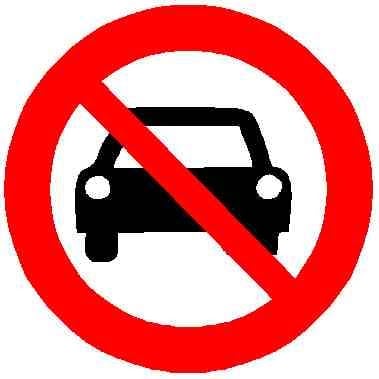

Here is my understanding: If everyone needs a car, then you need a lot of parking. If you need a lot of parking, then buildings end up being farther apart because the parking fills up space between them. The farther apart the buildings are, the more spread out everything is. The more spread out everything is, the more necessary a car becomes. And the more necessary a car becomes, the more parking you need. It’s a vicious cycle.
By the way, I quite recently lived in a prewar apartment, that was built without parking spots. But it was next to a private parking lot. They are rezoning and turning half of that parking lot into a building. I don’t think it will increase competition for street parking because that lot was hardly ever full. Clearly my experience is different from yours.
Underground parking tends to be expensive to build. IIRC in the US it’s typical for underground parking to cost over $100,000 per space to construct. Multistory garages are cheaper per space, but still more expensive than surface lots. Case in point: at my university, there was a chronic parking shortage, and it was difficult to find space for a new garage because of all of the politics over space in general. Eventually a new garage went up, but the capacity it added was nowhere near enough to alleviate the parking shortage.
Placing parking at ground level sounds like a practical way to boost capacity. But will it add enough spaces to solve all of our parking problems? I’ve seen quite a few buildings with that feature, but I’m not entirely sure who is allowed to park there. E.g. if there is a residential building with parking at ground level, but parking is only for residents, that won’t help me if I’m driving in and looking for street parking.
I would argue that when you design one part of a town, you make a tradeoff between drivability and walkability. How you make the tradeoff depends on which part of town you are looking at. E.g. where I am, if you go to the geometric center of the city, it is decently walkable, because that is where pedestrians are greatest in number. But there are fewer lanes for traffic and less parking. If you venture a little farther out, you’ll find lots of lanes for cars, strip malls with big parking lots, etc. that are more convenient for drivers but awkward to walk through. In other words, oftentimes needs are not accommodated in an equal way. Most places have to make a decision about who they prioritize. If you try to make everything exactly equal for everyone, the result may very well be an awkward compromise. E.g. the so-called “Stroad” is a classic example of a design that tries to cater to both drivers and pedestrians, and delivers a solution that is mediocre for both groups of people.